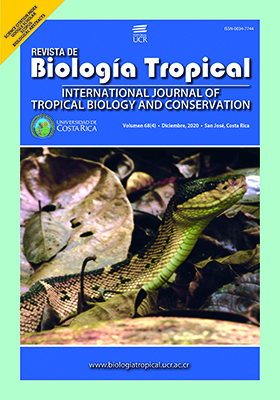Abstract
Introduction: Body size is an essential trait for endotherms to face the physiological requirements of cold, so there is a tendency to large body size at high altitudes and latitudes, known as Bergmann's rule. However, the validity of this ecomorphological rule to small-bodied endotherms across altitudinal gradients is poorly known. Objective: To understand the effects of environmental variation on body size, we assessed whether interspecific variation in body size of small tropical endotherms follows Bergmann's rule along tropical altitudinal gradients. Methods: We compiled data on elevational ranges and body masses for 133 species of hummingbirds of Colombia. We then assessed the association between body mass and mid-point of the altitudinal distribution using phylogenetic generalized least squares (PGLS) analyses under different evolutionary models. Results: We found a decelerating rate of evolution for body size since the Early Burst model of evolution provided a better fit to body mass data. For elevational range, we found a slow and constant rate since Pagel's lambda model provided a better fit to the mid-point of the altitudinal distribution data. Besides, phylogenetic regression analysis indicated that body mass and the altitudinal range of hummingbirds are associated through the phylogeny, with a positive but slight association (R2= 0.036). Conclusions: We found that body mass and altitude of hummingbirds are positively related, which is in agreement with expectations under Bergmann's rule. However, this association was weaker than expected for small and non-passerine birds like hummingbirds. Thus, our results suggest that environmental changes across altitudinal gradients do not strongly influence body mass in small tropical endotherms as hummingbirds.
##plugins.facebook.comentarios##

This work is licensed under a Creative Commons Attribution 4.0 International License.
Copyright (c) 2020 Oscar E. Murillo-García, Maria E. De la vega, Katherine Pérez-Castillo



